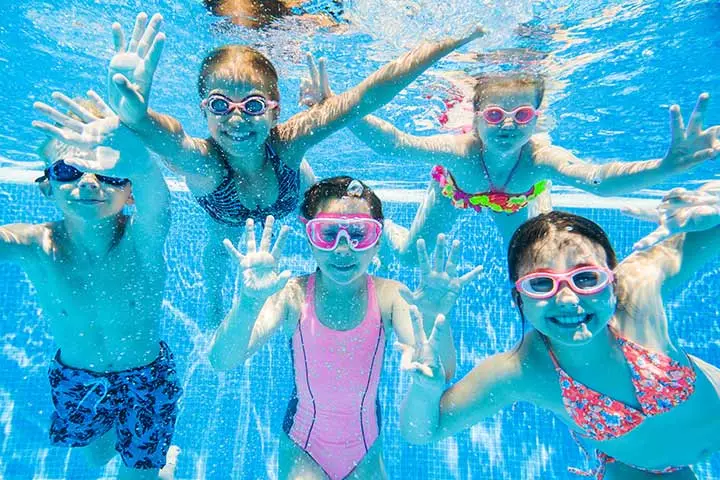If your child is a dedicated swimmer, spending hours perfecting their strokes in the pool, you might have noticed an unwelcome side effect: brown-yellow stains on their teeth.
This phenomenon, sometimes called “swimmer’s stain,” is surprisingly common among competitive young athletes. But why does a healthy activity like swimming lead to stained teeth? Let’s dive into the science and what you can do about it.
The Chemistry Behind the Stain
The staining isn’t caused by the water itself, but by the chemicals used to keep the pool clean, particularly chlorine and other disinfectants.
Here’s the breakdown of what scientists believe happens:
- The Interaction: The disinfectants and chemicals in the pool water interact with the proteins in your child’s saliva.
- The Breakdown: This interaction causes those salivary proteins to break down.
- The Buildup: Once the protective salivary proteins are compromised, it allows the brown-yellow stains to easily build up on the outside surface of the teeth.
In essence, the pool water’s chemistry changes the environment in your child’s mouth, making it a perfect breeding ground for tough stains.
How Much Swimming is Too Much?
Research has clearly linked the amount of time spent in the pool to an increased risk of these stains.
- The Threshold: Studies suggest that swimming more than six hours per week is the amount of time needed for swimmers to have an increased risk of staining.
- The Australian Findings: Research conducted in Australia found that competitive child swimmers had a six times greater chance of developing stains than their non-swimming peers.
This suggests that casual, occasional swimming is less likely to be the culprit—it’s the rigorous training schedule of a competitive swimmer that increases the exposure time and risk.
Can I Brush These Stains Away?
Unfortunately, no. These stains are notoriously tough to remove.
❌ Brushing at home will not be enough.
These particular stains bond strongly to the tooth enamel. If you notice these brown-yellow marks developing, you will need to schedule an appointment with a dental professional for a professional clean. They have the specialized tools and techniques needed to safely and effectively polish the stains away.
Keep in Mind: These stains can develop very quickly! Some children develop noticeable staining within just one month of having a professional dental clean. Regular, proactive dental visits are key for competitive swimmers.
✅ Your Action Plan for Swimmer’s Stains
Don’t let this discourage your child’s passion for swimming! With a little vigilance, you can manage this side effect:
- Prioritize Regular Dental Visits: Talk to your dentist about a more frequent cleaning schedule for your competitive swimmer.
- Encourage Rinsing: Immediately after exiting the pool, have your child rinse their mouth thoroughly with fresh water to wash away residual pool chemicals.
- Maintain Excellent Oral Hygiene: While brushing won’t remove the stains, maintaining a rigorous routine with a fluoride toothpaste will help keep their enamel strong and healthy overall.
By understanding the link between pool chemicals and tooth staining, you can better protect your child’s smile while they continue to excel in the pool!

